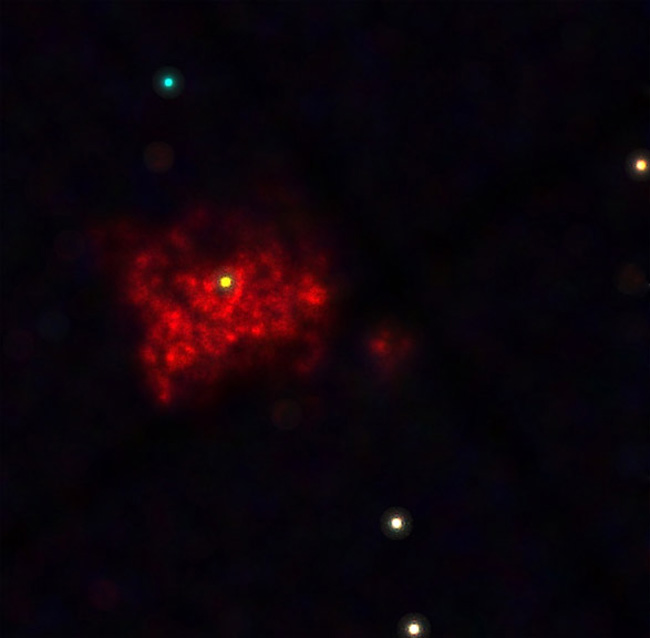Supersonic Cosmic Winds Collide in Rare Scene

Two stellartitans are waging wars of wind in the first such scene spotted outside the Milky Way Galaxy.
The binarystar system dubbed HD5980 contains two stars weighing30 and 50 times the mass of the Sun, each radiating more than a million timesas much light as the Sun.
The photonpressure created from the outpouring of such blinding light carries gas fromeach star in a supersoniccosmic wind. These winds carry away an amount of mass each month equal to Earth, at a speed 5 times faster thanthe solarwind, said Ya?l Naze of the University of Li?ge in Belgium, lead scientist for the new study of the binary system.
The duo hasa tight bond, separated by roughly 56 million miles (90 million kilometers), orabout half the distance between the Earth and the Sun.
"Thesestars are so close to each other that if they were in our solar system theycould fit inside the orbit of Venus," Naze said.
With suchproximity, the windssmash into each other with titanic force, heating the gas to millions ofdegrees. The result is an X-ray light show for astronomers.
"Thesystem emits about 10 times more energy in X-rays alone than the Sun radiatesover the entire spectrum," said study team member Michael Corcoran of NASA'sGoddard Space Flight Center in Greenbelt, Md.
Get the Space.com Newsletter
Breaking space news, the latest updates on rocket launches, skywatching events and more!
Astronomershave identified similar X-raysfrom about two dozen similar systems in the Milky Way, but HD 5980's fireworksare the first to be spotted outside our galaxy.
Aninternational team led by Naze spotted the system in the SmallMagellanic Cloud--a galaxy located about 170,000 light-years from Earth.The astronomers relied on the European Space Agency's XMM-Newton X-ray Observatoryand NASA's Chandra X-ray Observatory.
"It'sinteresting to be able to study an extragalactic colliding-wind binary like HD5980 as if it were in our own galaxy," Corcoran said.
The twostars [image]are in the process of dying and eventually will explode as supernovae. Currently, the moremassive star, HD 5980A, has begun an erratic stage within its life cycle calledthe Luminous Blue Variable (LBV) phase, which only occurs in the most massiveof stars. Its stellar pal, HD 5980B, is an evolved Wolf-Rayetstar that has already shed much of its original envelope.
- Vote: The Most Amazing Galactic Images Ever
- Video: Supernovas: Beacons in the Night
- Video: Supernovas: Destroyer/Creator
- Images: Amazing Galaxies
- Top 10 Star Mysteries
Join our Space Forums to keep talking space on the latest missions, night sky and more! And if you have a news tip, correction or comment, let us know at: community@space.com.










